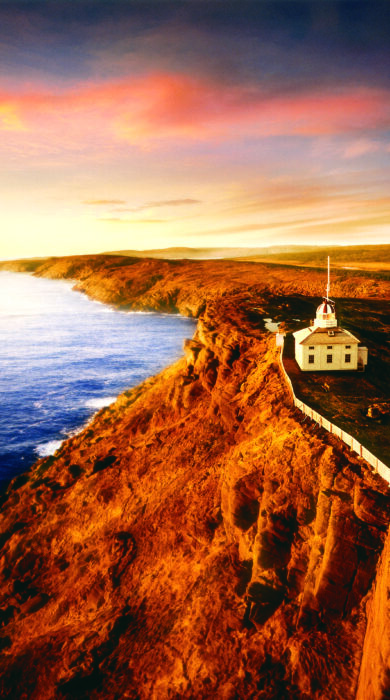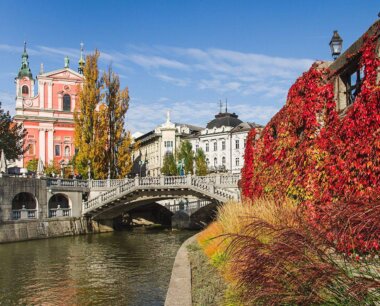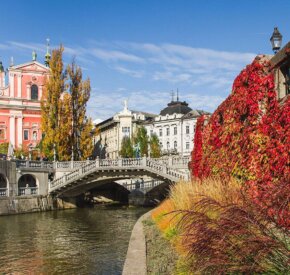
A travel guide to Atlantic Canada’s best wildlife and outdoor adventures
Want to know where and when to travel to in Atlantic Canada to uncover the wildest travel experiences? We’ve teamed up with the experts at Audley to help you plan your dream outdoors escape to this wild part of Canada….
New Brunswick

The highlights:
The enormous Bay of Fundy is one of the top places in the world for whale-watching: its huge tides make it a prime feeding ground for whales. Several species – including rare North Atlantic Right whales, humpbacks and finback whales – can be seen here in the right season. Alternative ways to explore New Brunswick’s Fundy Coast are on foot or by paddle power: the strange rock formations of Hopewell Rocks Provincial Park make for memorable kayaking adventures, while the coastal trails of Fundy National Park are a hikers’ paradise. On the Acadian coast, for a taste of the wild, devote a few days to exploring Kouchibouguac National Park, where you can enjoy warm beaches, wander the dunes, pedal along the salt marshes, learn about the Mi’gmaq heritage and – if you’re lucky – spot moose, deer and black bears.

Where to stay:
For sea views and historic architecture, head for the Algonquin Resort in Saint Andrews by-the-Sea, one of New Brunswick’s most photographed buildings, celebrated for its grand Tudor Revival style. Equally photogenic but more intimate in scale is Hotel Paulin, a timber-clad Acadian townhouse dating from 1891 located in Caraquet.
How to get there:
Audley’s 13-day self-drive tour of New Brunswick begins in Halifax, then heads to New Brunswick for Acadian history in St-Louis and Caraquet, island-hopping and coastal exploring around Saint Andrews by-the-Sea, and two days of hiking and kayaking around Fundy National Park and Hopewell Rocks.
Prince Edward Island

The highlights:If you’re in search of stunning beaches, Prince Edward Island is the place to be. Much of this Island’s north shore is a national park, fringed by dunes, secluded coves and beaches, many backed by low sandstone cliffs and marram grass. Hiking and cycling are perfect ways to explore: wander along the coast trails, keeping your eyes peeled for bald eagles, seals and red foxes, or pedal the Confederation Trail, a scenic cross-island route between Tignish and Elmira. The capital, Charlottetown, has many charming historic buildings, and is best-known to Canadians for its pivotal role in the Confederation Conference that helped shape modern Canada.

Where to stay:
History aficionados will fall head over heels for The Great George, a complex of red-brick heritage buildings in Charlottetown that have become the city’s top boutique hotel. The Hotel on Pownal is more modern, with functional rooms and a great downtown location.
How to get there:
Audley’s epic Maritime Treasures self-drive tour spans 18 days and three provinces. To get to PEI, you’ll cross the Confederation Bridge over from New Brunswick, spend a few days exploring Charlottetown, take a trip out to sea in a lobster boat and explore the breathtaking beaches.
Nova Scotia

The highlights:
Nova Scotia has so much to offer: wild trails, sprawling sands, stunning coastline and a rich cultural blend. Drive down the South Shore via delightful seaside towns like Chester, Lunenburg and Mahone Bay, then cut inland to Kejimkujik National Park to hike amongst old growth hemlocks, canoe routes that have been used for thousands of years by the Mi’kmaq and learn all about this First Nations culture.Taste Nova Scotia’s own appellation wine, Tidal Bay, in the Annapolis Valley, then track the coast road up to Cape Breton for whale-watching in Ingonish and Pleasant Bay, hiking in Cape Breton Highlands National Park and a road trip along the iconic Cabot Trail.

Where to stay:
The best places to stay in Nova Scotia are nearly always along the coast: epic Atlantic views await. Stay in a traditional cabin at the adults-only Seascape Coastal Retreat, or escape the world at Lantern Hill and Hollow, an oceanfront cottage complex that makes an ideal overnight stop along the Cabot Trail.
How to get there:
Nova Scotia is prime road-trip territory, and the South Shore, Kejimkujik, the Annapolis Valley and Cape Breton all feature in Audley’s Maritime Treasures tour. Taste wines, see whales, hit the trails, dive into Acadian culture, gorge at a gourmet lobster feast – Nova Scotia has it all.
Newfoundland and Labrador

The highlights:
Whether it’s watching puffins in Witless Bay, trekking in Gros Morne or Terra Nova National Parks, or kayaking alongside whales, icebergs and dolphins in Twillingate, Newfoundland and Labrador is a corner of Canada where the natural world still holds sway. It’s said that Viking explorer Leif Erikson landed at L’Anse aux Meadows ( a confirmed Viking settlement) over 1,000 years ago, but Canada’s indigenous people were here long before that. Learning about the culture and history of the Inuit, Innu, Mi’kmaq and Southern Inuit of NunatuKavut will give you a whole different understanding of this ancient landscape.

Where to stay:
Enjoy widescreen vistas of mountains, coast and sea at the Bonne Bay Inn, an intimate ten-room hotel in the heart of Gros Morne National Park, or stay at the century-old Quirpon Lighthouse Inn, built in 1922 on Newfoundland’s northern tip. There can’t be many hotels where icebergs sail past your bedroom window.
How to get there:
Audley’s 15-day Newfoundland Explored itinerary covers the must-see sights. The trip begins in the colourful port city of St John’s, then heads north via Trinity Bay and Twillingate to Gros Morne for some walking, kayaking and wildlife. After spying icebergs and whales on Quirpon Island, you’ll fly back to Halifax.





















